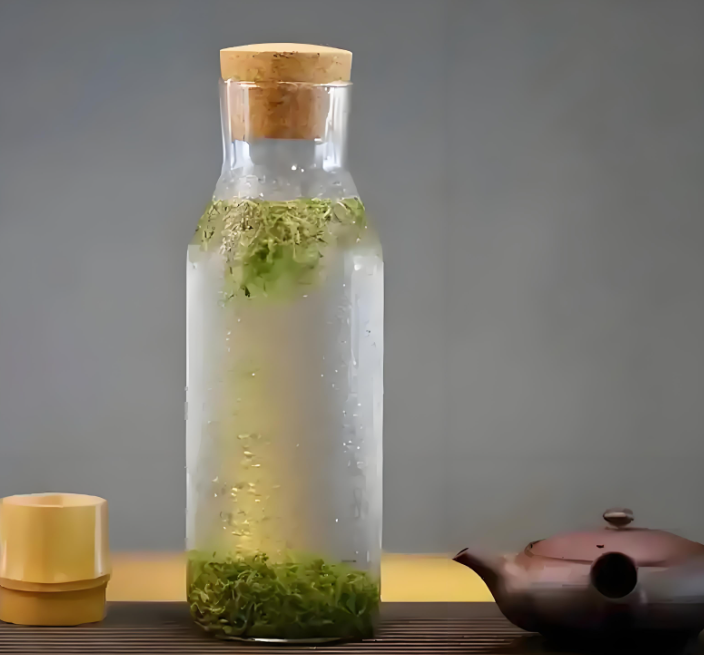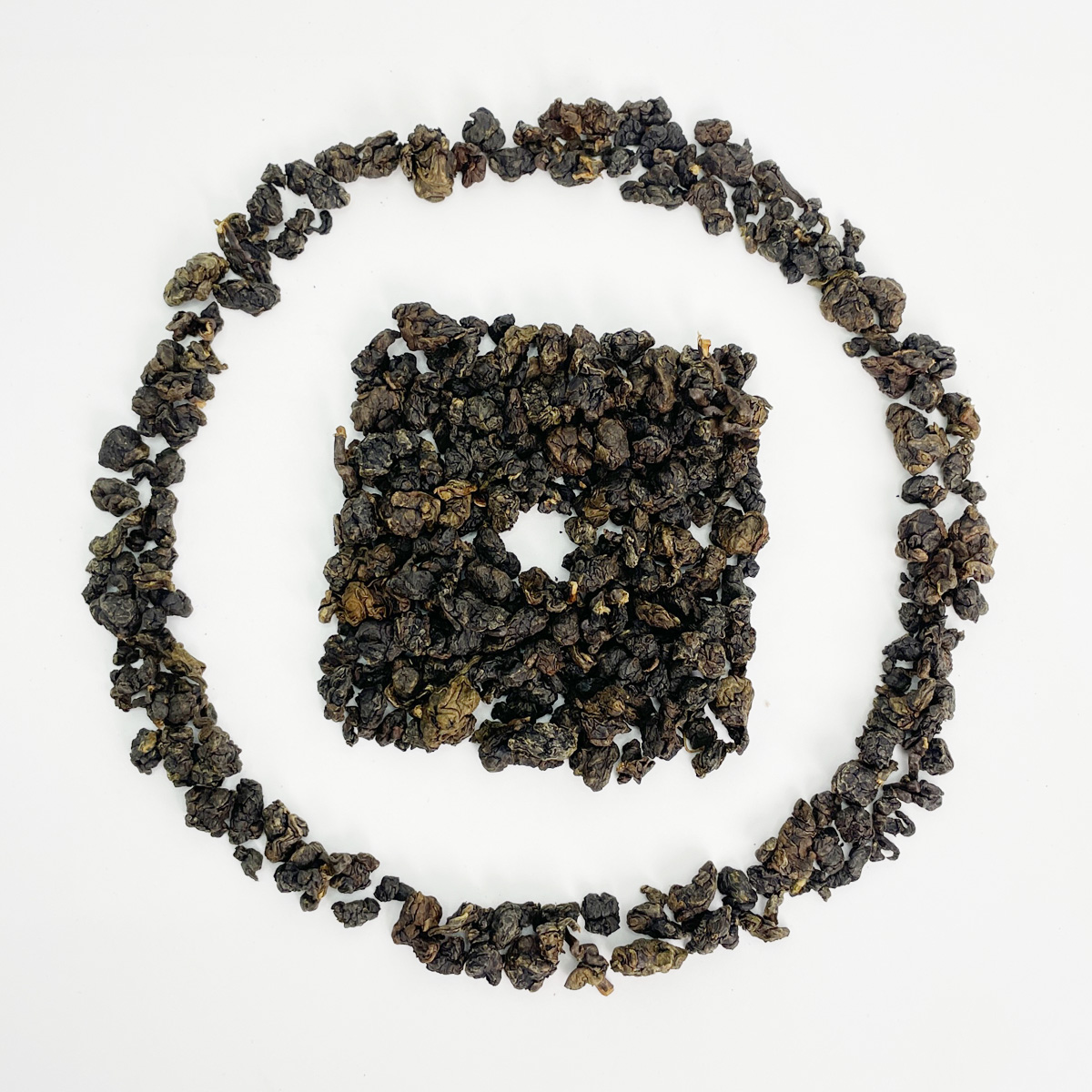1. Tea Selection Strategies: Controlling Caffeine at the Source
1.1 Varietal and Leaf Position
- Small-Leaf Varietals: Varieties like Qingxin Oolong contain 30% less caffeine than large-leaf Tieguanyin, ideal for sensitive individuals.
- Mature Leaves: Oolong made from third-leaf or older leaves reduces caffeine by 40% compared to buds.
- High-Altitude Gardens: Tea grown above 1,000 meters (e.g., Alishan) accumulates 35% less caffeine due to cloud cover reducing sunlight exposure.
1.2 Processing Impact
| Processing Parameter | Caffeine Change | Scientific Principle |
|---|---|---|
| Light oxidation (15-30%) | 30-35mg/cup | Retains natural L-theanine to buffer stimulation |
| Heavy roasting | 40% reduction | High temperatures sublimate caffeine |
| Aging (5+ years) | 3% annual decrease | Microbial breakdown of alkaloids |
Case Study: SGS 2024 tests showed medium-roast Dongding Oolong (45mg) had 40% less caffeine than unroasted counterparts (75mg).
2. Brewing Engineering: Precision Control oolong caffeine

2.1 Cold Brew Slow-Release Technique
- Method: 5g tea leaves + 500ml cold water, refrigerated for 8 hours.
- Results: 25mg caffeine/cup (25% less than hot brewing) with 95% polyphenol retention.
- Science: Low temperatures slow cell wall rupture, reducing caffeine dissolution efficiency.
2.2 Stepped Brewing Method
- First steep (30-second discard): Removes 30% caffeine.
- Second steep (45 seconds): Captures core flavors at 40mg caffeine.
- Third steep (60+ seconds): Rich taste with <20mg caffeine.
2.3 Water-Temperature Matrix
90°C water + 1 minute → 45mg caffeine (morning boost)
80°C water + 30 seconds → 25mg (afternoon relaxation)
Cold water + 8 hours → 18mg (evening enjoyment)
3.Personalized Programs of oolong tea caffeine
3.1 Energy Management
- Morning Wake-Up: Highly oxidized Da Hong Pao + 2-minute boiling steep (60mg).
- Afternoon Focus: Medium-roast Tieguanyin brewed 3x at 95°C (total 50mg).
- Pre-Workout: Jin Xuan Oolong bud cold brew concentrate (80mg/100ml).
3.2 Sensitive Groups
- Pregnant Women: Limit to 2 cups/day of Wen Shan Bao Zhong (15mg/cup)3.
- GERD Patients: Aged roasted oolong (<20mg) paired with nuts.
- Insomnia-Prone: Drink aged roasted oolong (28mg) after 4 PM.
3.3 Caffeine Alternatives
- Low-Caffeine GABA Oolong: Japanese decaf tech removes 90% caffeine while preserving flavor.
- Floral Blends: Oolong + chamomile (1:1 ratio) halves caffeine and aids sleep.

4. Scientific Q&A: Debunking Myths
Q1: Does cold brewing truly reduce caffeine?
✅ Yes. Taiwan TRES experiments confirm 8-hour cold brew releases 25% less caffeine than 3-minute hot brew
4. Key notes:
- Avoid broken leaves for cold brew to prevent over-extraction.
- Optimal choice: High-mountain oolong (e.g., Lishan).
Q2: Is oolong safe during pregnancy?
✅ In moderation. WHO guidelines suggest:
- Daily caffeine ≤200mg ≈ 4 standard cups.
- Prioritize low-caffeine varieties: aged Tieguanyin, roasted Dongding.
- Avoid空腹 drinking; pair with calcium-rich foods.
Q3: How to estimate caffeine intake quickly?
Use the **”333 Rule”**:
- 3g leaves = baseline 45mg.
- 3 reduction techniques: cold brew (-25%), first-steep discard (-30%), roasting (-40%).
- 3-cup limit: Recommended daily maximum for adults.
5. Advanced Techniques: Molecular-Level Control Oolong Tea Caffeine
5.1 Synergistic Compounds
- L-Theanine: 2.3% in high-mountain oolong creates a 1:2 ratio with caffeine, boosting focus by 40%.
- Theaflavins: Form slow-release complexes with caffeine in heavily oxidized teas.
5.2 Equipment Optimization
- Yixing Clay Pots: Dual-pore structure absorbs 10-15% caffeine.
- Smart Brewers: ±1°C and ±1-second precision ensure <5% caffeine variance.
5.3 Chronobiology Applications
- Cortisol Rhythm: High-caffeine tea (70mg) at 8-9 AM synergizes with natural hormone peaks.
- Melatonin Protection: GABA-enriched oolong reduces caffeine while adding sleep aids.
Authority Data Support
- Fujian Agriculture University: Heavy roasting achieves 39.7% caffeine sublimation.
- Tokyo Medical University: Cold brew retains 95% polyphenols vs. hot brewing.
By mastering leaf selection, brewing engineering, and biological rhythms, you can tailor caffeine intake from 18mg to 80mg for health and enjoyment. Emerging tech like NFC smart tea cakes now enables real-time caffeine tracking.
If you want to know more about Fujian Oolong Tea, you can read:Fujian Wulong Oolong Tea



